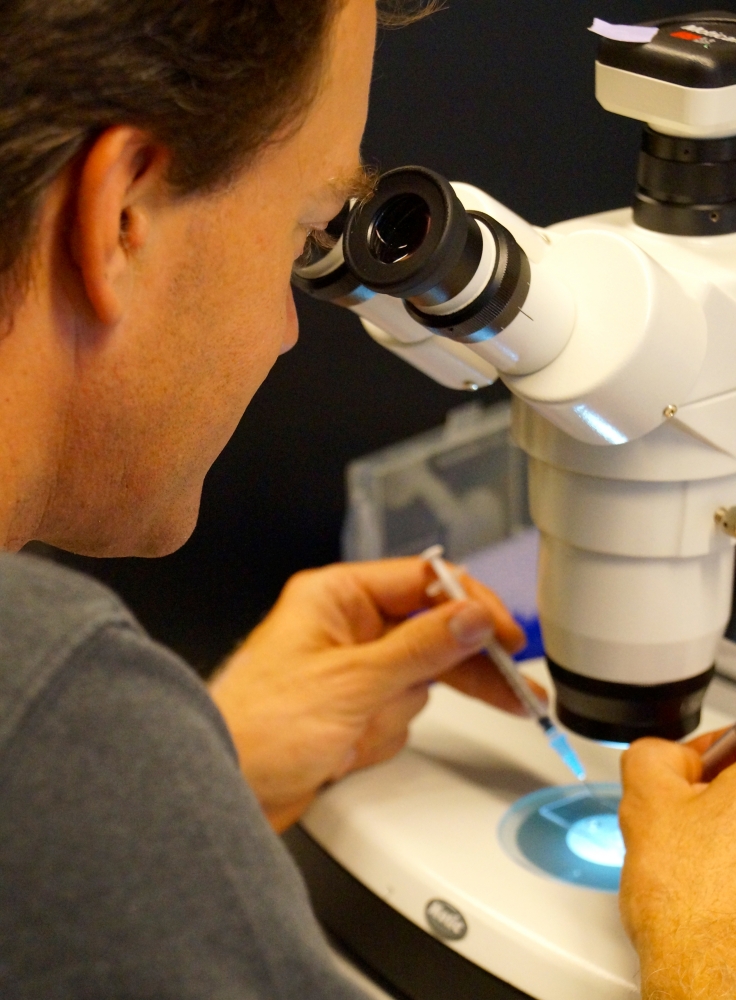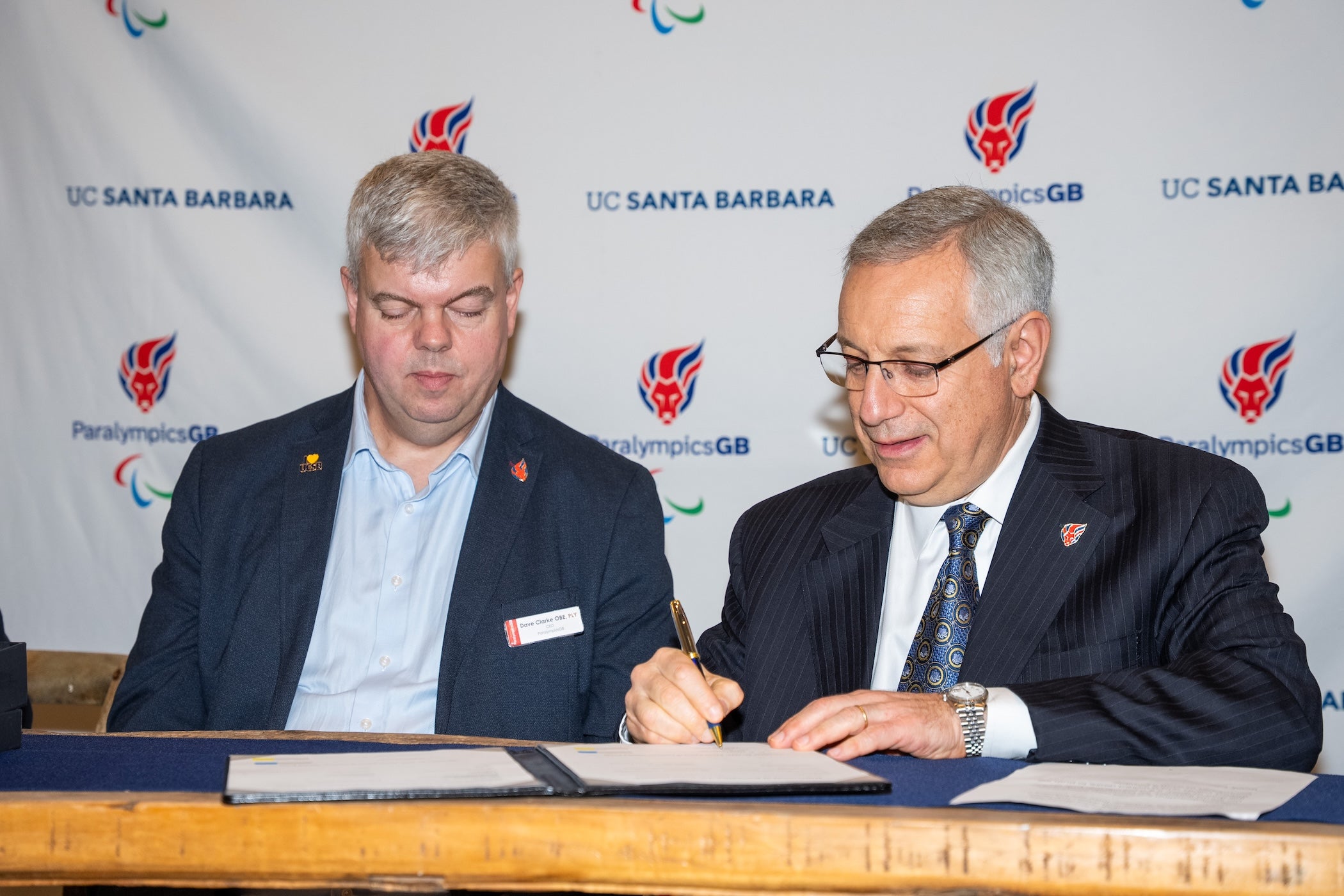
New Approaches to Quantifying How Animals Acquire Shape and Form


It's a summer course like no other at UC Santa Barbara or anywhere else. Spread between the lecture halls of the Kavli Institute for Theoretical Physics (KITP) and the labs in the California NanoSystems Institute (CNSI) on campus, the new Santa Barbara Advanced School of Quantitative Biology is abuzz with activity. Here, participants — graduate students, postdoctoral fellows, and even science faculty members from around the world –– rub shoulders with leading experts in the field and shed new light — literally — on the dynamics of morphogenesis. Morphogenesis is the process that converts the genetic blueprint of a multicellular organism into complex physical structure.
"This program is really unique in that it's incredibly interdisciplinary," said Michelle Dickinson, a senior lecturer (assistant professor) at the University of Auckland and a student in the course. "It's physics combined with biology, and technically I'm an engineer so it combines engineering, too. It's a great place to meet world leaders and experts, and live and eat and breathe the science that we're trying to solve."
The course, "New Approaches to Morphogenesis: Live Imaging and Quantitative Modeling," presented by KITP and CNSI, brings together close to a hundred international scientists from various fields to collaborate on the problem of animal development. "Quantitative biology is really a major construction project in science and so is a very natural focus for an interdisciplinary school," said Boris Shraiman, Susan F. Gurley Professor of Theoretical Physics and Biology, permanent member of KITP, and a founding co-director of the course. "Our special take on quantitative biology is to bring theoretical modeling together with experiments and integrate it and make it part and parcel of the biological method. This is where the KITP program comes together with the live microscopy lab at CNSI."
"We put together eight core ideas for research projects, but it's really the students that bring this to life," said Joel Rothman, Wilcox Professor of Biotechnology in UCSB's Department of Molecular, Cellular and Developmental Biology (MCDB) and the other founding co-director of the course.
"The students are driving the research in ways that we wouldn't have even come up with," he added. "They're bringing a lot of fresh ideas, so the synergy that's created by bringing scientists of this broad expertise together creates whole new ventures that wouldn't have been created in a typical course environment."
Years in the making, the course is designed to advance late Scottish biologist and mathematician D'Arcy Thompson's agenda of quantitative description outlined in his 1917 book, On Growth and Form. But almost a century later, these scientists are using the full power of modern imaging and molecular genetics, which makes the field ready for rapid progress. "We designed it in such a way that these experiments would be open-ended," noted Shraiman. "We hope new collaborations will form and the work started here will continue."
The experimental work, complemented by theoretical and computational modeling and analysis, involves a collaboration between course students and participants of the concurrent KITP workshop New Quantitative Approaches to Morphogenesis. Together with other researchers, students attend morning lectures-cum-discussion sessions with such luminaries as Eric F. Wieschaus, Squibb Professor in Molecular Biology at Princeton University and winner of the 1995 Nobel Prize in Physiology or Medicine.
"Scientific-wise, the discussions are all very interesting," said Romain Levayer, a postdoctoral fellow from the University of Bern in Switzerland. "It's more dynamic than I would have expected. We have a lot of discussions during the breaks so there is interaction with many different people."
A unique synergy comes from such interdisciplinary conversations. "The science is much greater than it would be if it were just focused on biologists or just focused on physicists," said Rothman. "And that provides a tremendous opportunity for the students. It also means there will be new research opportunities and discoveries that come out of this."
On the technical level, the course introduces several model organisms, including fruit flies, roundworms, and sea squirts, and provides instruction on live imaging, micro-manipulation, and genetic and chemical perturbations as quantitative tools to study developmental dynamics.
"We were able to draw on the research strength of our faculty colleagues on campus, several of whom — MCDB professors Denise Montell and Bill Smith and mechanical engineering professor Otger Campas –– are engaged in running experimental projects," said Shraiman. The morphogenesis course also got help from outside UCSB. Thomas Lecuit, a group leader at the Developmental Biology Institute of Marseilles and Ewa Paluch of University College London (UCL) are co-directing the course. In addition, Lars Hufnagel and Pierre Neveu of the European Molecular Biology Lab, Suzanne Eaton of the Max Planck Institute of Molecular Cell Biology and Genetics, and Andrew Oates of UCL lead experimental projects.
Hufnagel's project has students build a single-plane illumination microscope (SPIM) and then use it for imaging rapid developmental processes taking place in fruit flies and sea squirts. Another project, led by Thomas Gregor, an assistant professor of physics at Princeton University, examines with near molecular precision the spatio-temporal dynamics of gene expression in the fly embryo. Other projects focus on spatial arrangement and rearrangement of cells in developing tissues and on temporal fluctuations and oscillations that control cell differentiation and tissue patterning.
"What's clear is they've got the right people, people with expertise from all over," said Seth Donoughe, a Harvard graduate student who is working on the SPIM project. "My fellow students have tons of experience, lots of expertise in different areas. It's a good place to learn from workshop members as well. In terms of getting exposure to scientific stuff that people are doing and thinking, it couldn't be better."
"If I had a preconceived notion coming here, it would have been learning a bit about biology and try to understand something that is outside my field," Dickinson said. "What I've actually done is gain collaborators, learned about physics and things that I didn't even think were involved in the biological processes, and I've developed new collaborations worldwide and especially here at UCSB and in Santa Barbara that will probably go on for decades to come."
The Santa Barbara Advanced School of Quantitative Biology is supported by grants from the Burroughs Wellcome Fund and the Gordon and Betty Moore Foundation, as well as by the loan of state-of-the-art imaging systems from Andor, Coherent, Leica, Nikon, Olympus, and Zeiss. The course continues until August 24.



